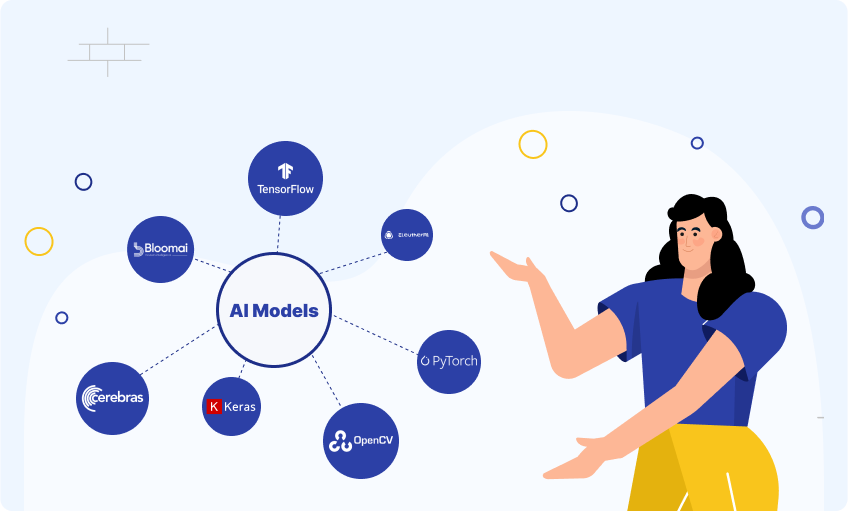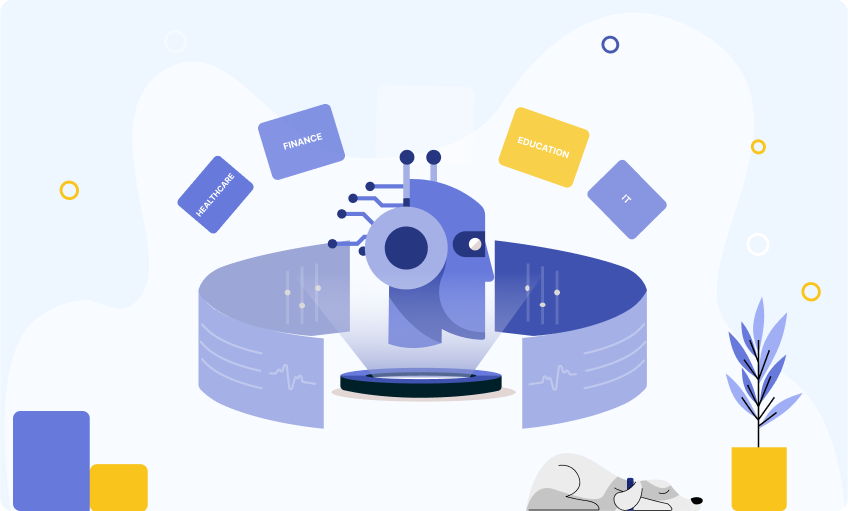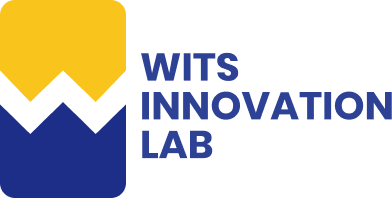Published - a year ago | 11 min read
The Power of Open-Source AI Models: A Guide for Everyone
The explosion of artificial intelligence (AI) in the last few years has created incredible tools that can change industries and everyday life. Open-source AI models form the center of this innovation. These models are accessible and are changing how we think about AI, allowing individuals, small businesses, and big companies alike to experiment and use cutting-edge technology.
So, what are open-source AI models, and why should we care? This blog will explain everything you need about them, from real-world benefits to famous models and how they shape the future.
So, what are open-source AI models, and why should we care? This blog will explain everything you need about them, from real-world benefits to famous models and how they shape the future.
What is the Open-Source AI Model?
At its core, open-source AI makes the underlying code and tools available for anyone to use, modify, and share. This is an advantage in itself. Rather than closed systems, open-source AI allows anyone – developers, hobbyists, etc. – to experiment with AI, contribute improvements, and build on the work of others.
For instance, if TensorFlow is mentioned, it is understandable that it is the most popular open-source AI framework. Thousands of developers work on it to build apps ranging from healthcare and finance to education. What we like about open-source AI is that it makes it easier for small teams to create powerful AI applications.
For instance, if TensorFlow is mentioned, it is understandable that it is the most popular open-source AI framework. Thousands of developers work on it to build apps ranging from healthcare and finance to education. What we like about open-source AI is that it makes it easier for small teams to create powerful AI applications.
Why Open-Source AI Matters?
High-quality AI models are now available to everyone, thanks to open-source AI. But why is this so important? Here are a few reasons:
Transparency: With open-source AI, you can see how it works. This is important for gaining trust and for the ethical use of AI. There's less chance of hidden bias or surprises; you know exactly what's happening inside the model.
Collaboration: People around the world can collaborate on open-source projects. This results in faster problem-solving, regular additions of new features, and rapid technology improvement.
Cost: One of the most significant barriers to entry is eliminated: Open-source AI is often free to use. With proprietary AI models no longer requiring companies to invest large sums of money into them, we are at the point where decentralization can become a reality. However, they can use open-source models and tailor them to their requirements.
Customization: Each organization is unique and has unique needs. The beauty of open-source AI is that businesses can modify these models to their own needs, which is not always possible with closed-source systems.
Transparency: With open-source AI, you can see how it works. This is important for gaining trust and for the ethical use of AI. There's less chance of hidden bias or surprises; you know exactly what's happening inside the model.
Collaboration: People around the world can collaborate on open-source projects. This results in faster problem-solving, regular additions of new features, and rapid technology improvement.
Cost: One of the most significant barriers to entry is eliminated: Open-source AI is often free to use. With proprietary AI models no longer requiring companies to invest large sums of money into them, we are at the point where decentralization can become a reality. However, they can use open-source models and tailor them to their requirements.
Customization: Each organization is unique and has unique needs. The beauty of open-source AI is that businesses can modify these models to their own needs, which is not always possible with closed-source systems.
10 Top Open-Source AI Models You Should Know

Below is a list of today's most powerful and commonly used open-source AI models. Each has its own strengths and is suitable for different jobs and sectors.
1. GPT-Neo
EleutherAI developed GPT-Neo, an open-source alternative to OpenAI's GPT-3. It is a large-scale language model that can generate human-like text, complete text, answer questions, and chat with humans. GPT-Neo is a free, open version of GPT-3 that mimics the structure. So, because of its capabilities, content creation, drafting emails, customer support, and even more advanced natural language processing (NLP) tasks like summarization and data extraction come in handy. GPT Neo can be integrated into business customer service systems, automated content can be generated, and chatbots can even be deployed for better communication. The model is open-source, so developers can modify it to suit their specific needs better, making it fit for many industries and applications. GPT-Neo is available to everyone, allowing smaller companies to use advanced AI without the cost barrier of proprietary models like GPT-3.
Best For: Content creation, customer support, and text generation.
Why It's Popular: It's free to use and as speedy as proprietary models.
Best For: Content creation, customer support, and text generation.
Why It's Popular: It's free to use and as speedy as proprietary models.
2. TensorFlow
One of the most sought-after ML and DL-oriented open-source libraries is TensorFlow, developed by Google. It offers an entire ecosystem of tools to build, train, and deploy machine learning models on various platforms, e.g., desktop, mobile, and cloud. From image recognition and speech processing to predictive analytics, TensorFlow offers excellent support. It allows developers to create and train custom ML models, conduct real-time data analysis, and build AI-powered applications without much hassle. Its support for high-level APIs (such as Keras) and low-level computational graphs makes it one of its biggest strengths: beginners and advanced users can build complex models. TensorFlow is an open-source library with a massive community, extensive documentation, and pre-built models, making AI development easier for industries such as healthcare (for medical imaging) and finance (for risk analysis).
Best For: Machine learning, deep learning, predictive analytics.
Why It's Popular: It's used in industries like healthcare and finance, is versatile, and has a strong community.
Best For: Machine learning, deep learning, predictive analytics.
Why It's Popular: It's used in industries like healthcare and finance, is versatile, and has a strong community.
3. Hugging Face's Transformers
In the world of pre-trained natural language processing (NLP) models, Hugging Face's Transformers library is a hub that easily incorporates language models into your AI applications. It provides models for tasks like text classification, question answering, sentiment analysis, etc. With the aid of BERT, GPT, and T5, state-of-the-art language models, which have already been trained on terabytes of text, are accurate right out of the box. Customer service chatbots and healthcare tools that automate medical record analysis use Hugging Face. It is user-friendly, well-documented, and has an active community for support, which developers love. It's good for businesses to upgrade trained models to speed up their AI projects and deploy quickly without heat customization.
Best For: Automating text-related tasks, building chatbots, and analyzing customer feedback.
Why It's Popular: It's easy to use, has good documentation, and has many pre-trained models.
Best For: Automating text-related tasks, building chatbots, and analyzing customer feedback.
Why It's Popular: It's easy to use, has good documentation, and has many pre-trained models.
4. TyTorch
Facebook's AI Research lab PyTorch is an open-source deep learning framework famous for its simplicity and flexibility. It is widely used for building AI models in academia or industry, especially for research-heavy domains such as computer vision, natural language processing, and reinforcement learning. The main reason PyTorch is so popular is its dynamic computational graph, which makes it possible for Python developers to debug easily and work with it intuitively. In addition to the above, the framework supports GPU acceleration for faster model training. Thanks to its deep integration with Python libraries, PyTorch is a favorite among researchers and developers who need rapid prototyping. Due to its strong community support and regular updates, it has become a go-to tool for creating custom AI models, e.g., image classifiers, speech recognition systems, or recommendation engines. One of the advantages of PyTorch is that it has positioned itself as a leading framework (research and production) for machine learning and AI solutions.
Best For: In AI, research and development in academia, particularly.
Why It's Popular: It's intuitive and plays nicely with Python, which is why it's popular with data scientists.
Best For: In AI, research and development in academia, particularly.
Why It's Popular: It's intuitive and plays nicely with Python, which is why it's popular with data scientists.
5. OpenCV
The open-source Computer Vision Library (OpenCV) is an open-source framework for real-time computer vision applications. AI is used for image processing, object detection, face recognition, and video analysis. Developers can easily use OpenCV to manipulate and analyze images and videos, automate visual inspections, add real-time face detection to apps, and create augmented reality experiences. This is highly optimized for performance and can run on any platform (from desktops to mobile devices to embedded systems). It also provides various pre-built functions so developers can create complex computer vision algorithms without starting from scratch. Its real-time processing capabilities render it useful for robotics, healthcare (medical imaging), and automotive (self-driving cars). OpenCV has extensive support for C++, Python, and Java; thus, it forms a perfect bridge between academic research and its actual applications.
Best For: Image and video processing in real-time.
Why It's Popular: It's fast, efficient, and has been around forever, so plenty of support is available.
Best For: Image and video processing in real-time.
Why It's Popular: It's fast, efficient, and has been around forever, so plenty of support is available.
6. Keras
Keras is an open-source neural network library for Python that feels and works like Python. Keras is a high-level API written in Python that runs upon TensorFlow, Theano, or CNTK and is highly focused on creating and training neural networks with very few lines of code. It has a modular design, makes building deep learning models very quick, and provides flexibility for beginners and power users. Keras is used in academia for educational purposes and by companies for rapid prototypes of an AI model. The library is best suited for tasks like image classification, sentiment analysis, and even more complex tasks such as deep learning research and AI-powered recommendation systems. Keras is a go-to tool for fast experimentation and building models in industries like retail (for recommendation engines) and healthcare (for predictive diagnostics) due to its simplicity and powerful backends like TensorFlow.
Best For: For beginners in deep learning and AI prototyping.
Why It's Popular: It is simple and flexible, perfect for those just starting with AI.
Best For: For beginners in deep learning and AI prototyping.
Why It's Popular: It is simple and flexible, perfect for those just starting with AI.
7. Cerebras-GPT
Cerebras Systems has developed Cerebras-GPT, an open-source AI model optimized for high-performance computing tasks. The model is suitable for handling large-scale AI workloads and is highly suited to real-time data analysis, simulations, and complex machine-learning tasks. It makes Cerebras-GPT unique: using specialized hardware, like the Cerebras Wafer-Scale Engine (WSE), with advanced AI models to achieve unprecedented computational speeds. It is beneficial for heavy industries with lots of computational power, such as the predictive modeling required by the finance industry, the genomic analysis needed by healthcare departments, or research institutions with tons of data. Cerebras-GPT shines in environments that require rapid data processing and where time and accuracy matter. It's becoming increasingly common in organizations that have to deal with heavy AI workloads, from scientific research to large-scale data-driven business operations, because of its high efficiency.
Best For: For large enterprises that need sizeable computational power.
Why It's Popular: It is fast and efficient, making it a perfect fit for a company dealing with big data.
Best For: For large enterprises that need sizeable computational power.
Why It's Popular: It is fast and efficient, making it a perfect fit for a company dealing with big data.
8. BLOOM

BLOOM (BigScience Large Open-science Open-access Multilingual) is a large open-source AI language model for multilingual natural language processing. BLOOM is best suited for cross-lingual tasks such as translation and global content generation and can work with text in multiple languages. The BigScience initiative, a collaboration of over 1,000 researchers, developed the project, making it one of the most robust multilingual AI models. BLOOM allows businesses that work in international markets to overcome language barriers by providing customer support, translations, and content localization to many languages. Because it can process text from languages other than the most common, its broad language coverage is helpful to enterprises functioning in global economies or NGOs and researchers extending their operations into countries with lesser spoken (though perhaps widely read) languages. BLOOM is easily implemented and integrated into your workflow thanks to support from platforms like Hugging Face.
Best For: Translation and multilingual text generation.
Why It's Popular: Its ability to support multiple languages is great for global companies that need cross-lingual support.
Best For: Translation and multilingual text generation.
Why It's Popular: Its ability to support multiple languages is great for global companies that need cross-lingual support.
9. Dolly by Databricks
Dolly is an open-source AI model built by Databricks for enterprise data analytics and machine learning tasks. Unlike other AI models, Dolly is specially optimized for large datasets, so it's perfect for companies that make decisions based on big data. Dolly is built for super-speed data processing and analysis, enabling predictive analytics and machine learning applications. This model is perfect for finance, healthcare, and e-commerce industries, where real-time data analysis can improve business results. Dolly's integration with Databricks & Hugging Face platforms enables businesses to integrate the model into their data pipelines effortlessly, helping them make better data-driven decisions. Dolly is a specialized tool that can scale AI across enterprises, providing businesses with both flexibility and the power to manage complex machine learning models for companies that work with big data.
Best For: Analysis of big data, machine learning, and predictive modeling.
Why It's Popular: It is efficient with large datasets and fits nicely on big data platforms like Databricks.
Best For: Analysis of big data, machine learning, and predictive modeling.
Why It's Popular: It is efficient with large datasets and fits nicely on big data platforms like Databricks.
10. IBM's Latest Model: Granite 3.0
Recently, IBM introduced Granite 3.0, the newest of its business AI models. IBM Granite 3.0 models are built to ride the growing enterprise adoption of generative AI technology. Unlike other AI models that only focus help on open-source, IBM raises open-source and paid services through its Watsonx platform and is willing to help different use cases.
What makes Granite 3.0 stand out is its integration with Nvidia's H100 GPUs, which are thought to be the crème de la crème when it comes to AI processing. This model is designed for heavy computation tasks and aims to simplify AI deployment for businesses so they don't have to have their data centers. It's a solid tool businesses keen on exploring generative AI can use but at scale and securely.
Best For: AI applications in enterprise, automation, and data-driven decision-making.
Why It's Popular: Open-source flexibility with powerful enterprise-grade support via IBM's Watsonx platform.
What makes Granite 3.0 stand out is its integration with Nvidia's H100 GPUs, which are thought to be the crème de la crème when it comes to AI processing. This model is designed for heavy computation tasks and aims to simplify AI deployment for businesses so they don't have to have their data centers. It's a solid tool businesses keen on exploring generative AI can use but at scale and securely.
Best For: AI applications in enterprise, automation, and data-driven decision-making.
Why It's Popular: Open-source flexibility with powerful enterprise-grade support via IBM's Watsonx platform.
The Future of Open-Source AI

Open-source AI is creating new opportunities. Innovation is running at an incredible pace thanks to collaboration between developers, researchers, and businesses. This leaves us with new models, tools, and frameworks to build upon to solve more complex problems.
In the future, we're likely to see open-source AI models become even more sophisticated, with applications across industries such as:
Healthcare: AI-powered diagnostics, personalized treatment plans, and more accurate medical imaging are also available.
Finance: Detection of fraud, management of risk, and personalized banking services.
Education: Automated grading systems and AI-driven personalized learning.
What's beautiful about open-source AI is that it's not just for big corporations. This technology can provide small startups and individual developers the power to create things they could not do before without the financial investment required.
In the future, we're likely to see open-source AI models become even more sophisticated, with applications across industries such as:
Healthcare: AI-powered diagnostics, personalized treatment plans, and more accurate medical imaging are also available.
Finance: Detection of fraud, management of risk, and personalized banking services.
Education: Automated grading systems and AI-driven personalized learning.
What's beautiful about open-source AI is that it's not just for big corporations. This technology can provide small startups and individual developers the power to create things they could not do before without the financial investment required.
Challenges of Open-Source AI
While open-source AI offers many benefits, there are some challenges to be aware of:
Bias in Data: Many open-source models are trained on publicly available datasets and, therefore, inherit the data biases. This is worth noting when modeling sensitive applications such as healthcare or criminal justice.
Security: Malicious actors also have access to open-source models. We must ensure that the use of AI models is done responsibly and securely so that they do not get misused.
Support: While proprietary AI systems might have extensive customer support, the same can not be said for open-source models. While the community is usually helpful, businesses may need to invest in technical expertise to troubleshoot problems.
Bias in Data: Many open-source models are trained on publicly available datasets and, therefore, inherit the data biases. This is worth noting when modeling sensitive applications such as healthcare or criminal justice.
Security: Malicious actors also have access to open-source models. We must ensure that the use of AI models is done responsibly and securely so that they do not get misused.
Support: While proprietary AI systems might have extensive customer support, the same can not be said for open-source models. While the community is usually helpful, businesses may need to invest in technical expertise to troubleshoot problems.
Open-Source AI: How to Get Started
If you are new to AI and starting with open-source models seems overwhelming, it doesn't have to be. Here's a simple approach to get you started:
Choose a Framework: Begin with a well-known framework like TensorFlow or PyTorch. These are user-friendly and have lots of documentation and tutorials to help you through the process.
Join the Community: Join open-source communities. Countless open-source AI projects are maintained on platforms like GitHub, where you can contribute and learn from others.
Experiment: Don't be afraid to try things out. There are many ways to experiment, whether building a simple chatbot or analyzing some data.
Stay Updated: The field of AI is proliferating. If you want to be ahead, always monitor new developments, tools, and frameworks.
Choose a Framework: Begin with a well-known framework like TensorFlow or PyTorch. These are user-friendly and have lots of documentation and tutorials to help you through the process.
Join the Community: Join open-source communities. Countless open-source AI projects are maintained on platforms like GitHub, where you can contribute and learn from others.
Experiment: Don't be afraid to try things out. There are many ways to experiment, whether building a simple chatbot or analyzing some data.
Stay Updated: The field of AI is proliferating. If you want to be ahead, always monitor new developments, tools, and frameworks.
Final Thoughts: Open-Source AI is Here to Stay
In summary, React Native and Flutter are powerful frameworks with advantages and disadvantages. However, regarding debugging and testing, code reusability, and prospects, Flutter has a slight edge over React Native.
For businesses, the best framework will depend on their specific needs and requirements. Considering your project's goals, timeline, and budget, as well as the skills and experience of your development team.
Ultimately, the choice between React Native and Flutter is personal and should be based on your specific needs and requirements. Both frameworks have advantages and disadvantages, so it's important to consider your project's goals, timeline, and budget before making a decision.
For businesses, the best framework will depend on their specific needs and requirements. Considering your project's goals, timeline, and budget, as well as the skills and experience of your development team.
Ultimately, the choice between React Native and Flutter is personal and should be based on your specific needs and requirements. Both frameworks have advantages and disadvantages, so it's important to consider your project's goals, timeline, and budget before making a decision.

Written by / Author
Manasi Maheshwari
Found this useful? Share With
Top blogs
Most Read Blogs
Wits Innovation Lab is where creativity and innovation flourish. We provide the tools you need to come up with innovative solutions for today's businesses, big or small.
© 2025 Wits Innovation Lab, All rights reserved
Crafted in-house by WIL’s talented minds

